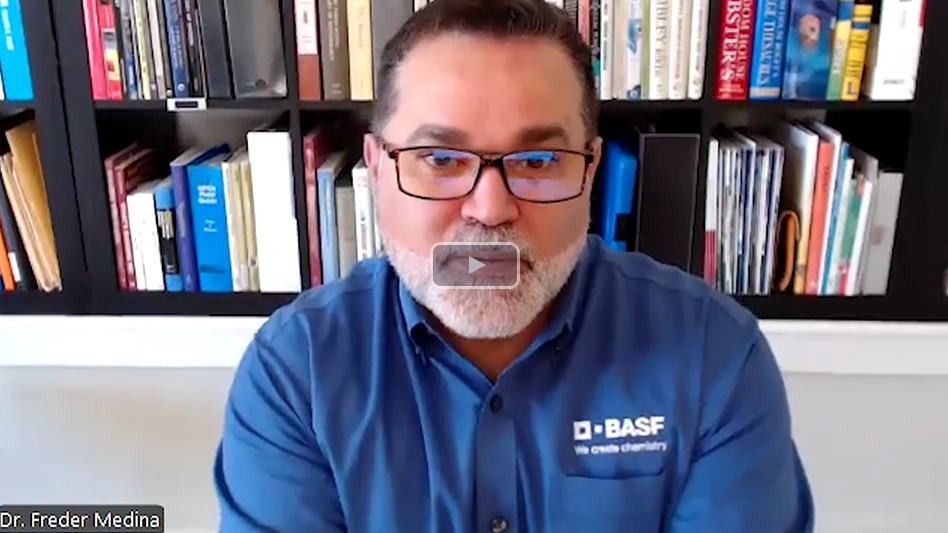West Nile virus (WNV) has been found from South Africa to Southeast Asia. It has been extensively studied in Egypt and Israel. In the latter country epidemics typically appear from May to October. The two principal vectors in these countries are Culex pipiens and Culex univittatus.
West Nile virus has only recently been discovered within the United States. Although the specific date of introduction will never be known, the presence of the disease was first noted in 1999. The first outbreak occurred in Queens, N.Y., and was confined to an area within a 75-mile radius. That year, of the 62 people who were hospitalized with symptoms associated with the central nervous system, seven died. Thousands of birds were affected by the disease, but only nine infected horses were reported that year.
The following year, it was obvious that the disease survived its first winter in the United States as it spread down the east coast of the U.S., making its presence known in 12 states. The incidence in humans dropped considerably to 20 cases and only two deaths.
During the past year (2001), West Nile virus became much more widely distributed as it was reported from 27 states and the District of Columbia. Fifty human cases and five deaths were reported. The median age of those affected was 70 years; thus, the disease appears to be more problematic for the elderly.
Additional concerns are the impact the disease is having on bird populations and the significant health threat it poses to horses. Besides humans and horses, 80 species of birds and 22 species of mosquitoes have been found infected with the virus. Other infected animals include bats, cats, rabbits and dogs.
To date, the disease has been found in some form from Maine to Florida and as far west as Missouri, Arkansas and Iowa. Scientists studying the disease fear that in 2002 it will reach the Rocky Mountains, if not further west and that the number of currently reported cases is only the tip of the iceberg, i.e., there may be 100 to 200 unreported infections for every case reported. Many of these unreported cases are asymptomatic or are mild cases diagnosed as viral infections of unknown origin.
Because pest management professionals interact daily with customers who may have questions or concerns about WNV, here’s an update on this virus that is rapidly spreading throughout the United States.
HOW BIRDS ARE AFFECTED. The most significant factor in the spread of West Nile virus appears to be migratory birds. While non-migratory birds, such as crows and jays, are readily killed by the infection, most migratory species, while infected, do not die.
These migratory birds move south for the winter, which provides an overwintering reservoir for WNV. There they mingle with uninfected birds, which subsequently become infected and upon their return in the spring further distribute the virus.
Birds appear to be the reservoir animal for the virus, which is transmitted by the bite of a mosquito from bird to bird and to other dead-end hosts, such as humans and horses. There is no evidence to indicate that the disease is transmitted from one animal to another through direct contact, except perhaps birds of prey feeding on infected birds.
As of September 2001, the Communicable Disease Center reported that 20 mosquito species tested positive for WNV (see list above). In the Northeast, the mosquito species most commonly associated with the virus is Culex pipiens pipiens, the northern house mosquito, which prefers to breed in temporary bodies of water containing high organic matter, e.g., puddles, catch basins, catchment ponds and containers. Typically, these mosquitoes feed at dusk and during the day they rest in protected areas around homes, buildings and other structures, such as culverts and bridges close to their breeding site. They are not strong fliers so they are usually found near the breeding site. Fertilized adult females are the overwintering stage.
Recent evidence suggests that Culex salinarius may play a more important role in the transmission of WNV to humans than Culex pipiens pipiens. This species breeds in fresh and salt water marshes, ponds, lakes and artificial containers around structures and they readily feed from dusk to dawn.
Mosquitoes undergo complete metamorphosis and have four life cycle stages (egg, larva, pupa and adult). All stages except the adult stage are dependent on water for their survival. Although all species do not lay their eggs directly in or on water, the eggs require water to hatch. The life cycle (egg to adult) can be as short as 10 days. Only the adult females feed on blood, which they require in order to produce viable eggs. In the absence of a blood meal, they can survive on flower nectar.
Many of the mosquito species associated with WNV are attracted to light. Nighttime lighting draws female mosquitoes to structures and once in the vicinity of the structure, other chemical cues (e.g., CO2 and body odors), affect their behavior, thus aiding them in locating their next blood meal. Once near structures, mosquitoes use protected areas, such as shrubbery, below-grade entryways, shady and cooler walls, as daytime resting sites. Entering these areas may prompt feeding activity.
There are many steps that can be taken in order to reduce mosquito bites and the subsequent risk of contracting WNV and other diseases transmitted to humans through bites of infected mosquitoes. Refer to the steps on the following page as you encounter questions from your clients regarding West Nile virus.
PROTECTIVE MEASURES. Pest management professionals can protect themselves from mosquitoes by following these guidelines:
• Outdoor activities during peak mosquito activity, typically dusk to dawn, should be avoided.
• Breeding sites and resting sites should be avoided.
• Long-sleeved pants and shirts should be worn.
• Skin repellents, such as DEET (formulations more than 35 percent are overkill), should be used when entering areas in which mosquitoes are active.
• Clothing repellent, such as products containing 0.5 percent permethrin, should be applied to all outer garments before putting on the clothing. Skin applications of permethrin are not permitted.
SOURCE REDUCTION. Pest professionals can suggest to clients some ways that mosquito sources can be removed:
• All water-holding containers, i.e., toys, tires, cans, etc., should be removed.
• Roof gutters should be cleaned to prevent standing water.
• Flat roofs should be inspected to determine if they retain pooled water for more than seven days.
• Tree holes should be drained and sealed so that they don’t collect water.
• Birdbaths and wading pool water should be changed every seven days.
• Low areas that hold water for more than seven days should be filled.
• Drainage ditches and culverts should be cleaned so that they do not collect water.
• Flowerpots and other large receptacles around structures should be inspected for mosquito larvae and emptied.
• Ponds and other permanent bodies of water can be stocked with mosquito-eating fish.
• Lighting should be changed so that mosquitoes are not attracted to structures. Yellow “bug-bulbs” and sodium vapor bulbs are less attractive to mosquitoes. As interior lighting also attracts mosquitoes, homeowners should be advised to use window shades at night.
INTERVENTION FROM A PRO. Here are several ways pest management professionals can provide mosquito control to their customers as an add-on service to their established control programs:
• Ponds and other permanent bodies of water can be treated with larva-cides, products with methroprene or the bacteria, Bti.
• Residual insecticides applied to resting sites, e.g., shrubbery and walls, are effective in either repelling or killing mosquitoes landing on the treated surfaces. The most effective repellent insecticides are pyrethroids, e.g., lambda cyhalothrin, deltamethrin and permethrin; the most durable formulation is a microencapsulate.
• Aerosol applications can be used to kill exposed adults in protected areas, under the eaves of roofs and inside structures.
• Ground ultra-low volume (ULV) applications are transient treatments that kill adult mosquitoes; however, there is no residual activity. The effectiveness of these applications depends on temperature and wind speed that significantly affects the amount of time the airborne droplets remain in the target area.
CONCLUSION. Here’s what we do know: To date, West Nile virus has not resulted in the human mortality once feared by many. However, it can cause significant morbidity. It appears to play a major role in bird mortality and is a health threat to horses. Here’s what pest management professionals can expect: West Nile virus will not disappear in the near future and it likely will extend across the continental United States within the next two years.
Richard Kramer, Ph.D., is technical director of American Pest Management, Takoma Park, Md. He can be reached at 301/891-2600 or rkramer@pctonline.com.
Editor's note: The photos in this story were provided by Gene White, director of training for Rose Exterminator Co., Troy, Mich.
|
ONLINE ONLY: WNV Information From The CDC
To find links to your community’s and state’s West Nile virus Web site as well a WNV Q&A section, guidelines for surveillance, prevention and control of WNV and more, visit the Centers For Disease Control and Prevention Web site at http://www.cdc.gov/ncidod/dvbid/westnile/city_states.htm. |

Explore the March 2002 Issue
Check out more from this issue and find your next story to read.
Latest from Pest Control Technology
- Moneypenny is a Provider of Virtual Receptionists
- Video: Top 10 PCT Photo Contest Finalists
- Massey Services Expands with Southeast Commercial Region
- Pest Management Foundation Announces Kevin J. Burns Scholarship
- How to Identify Clover Mites
- Termite Threat Halted in Southern Florida
- PCT Media Group Adds Managing Editor Katie Hobbins
- Evens Clerjuste on Team Communication as Company Growth Point





